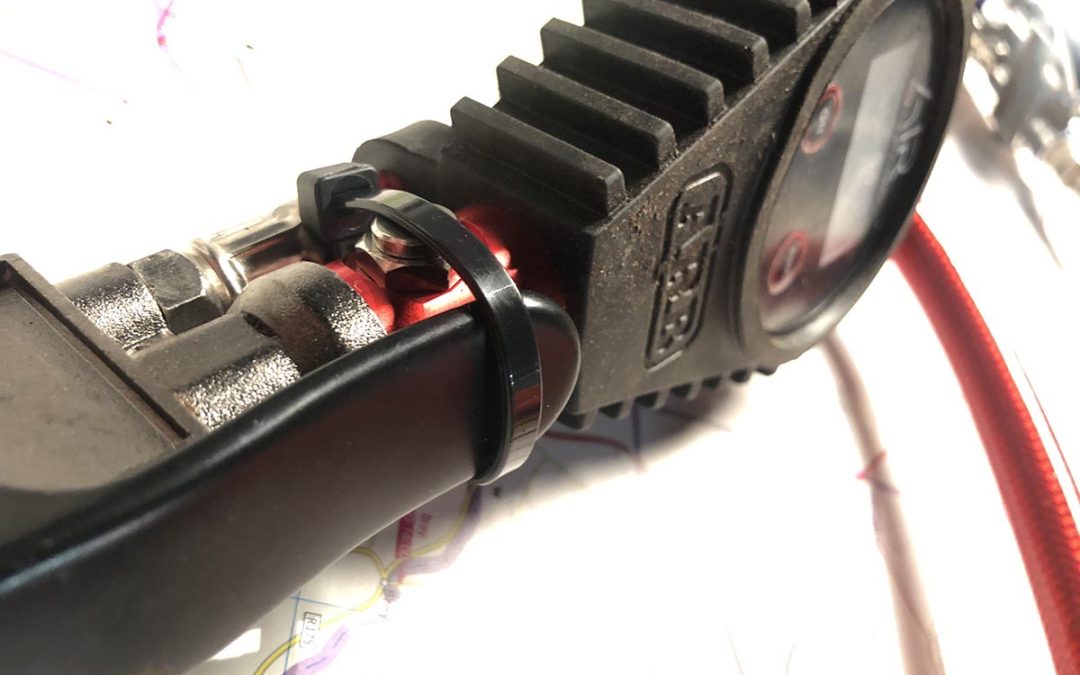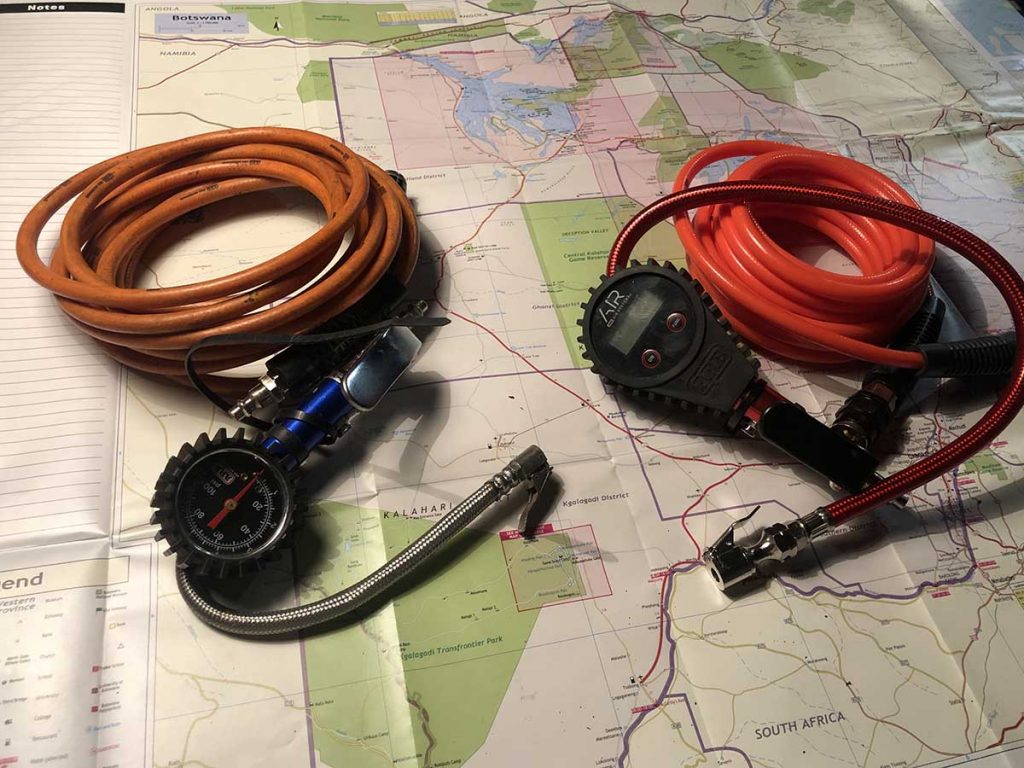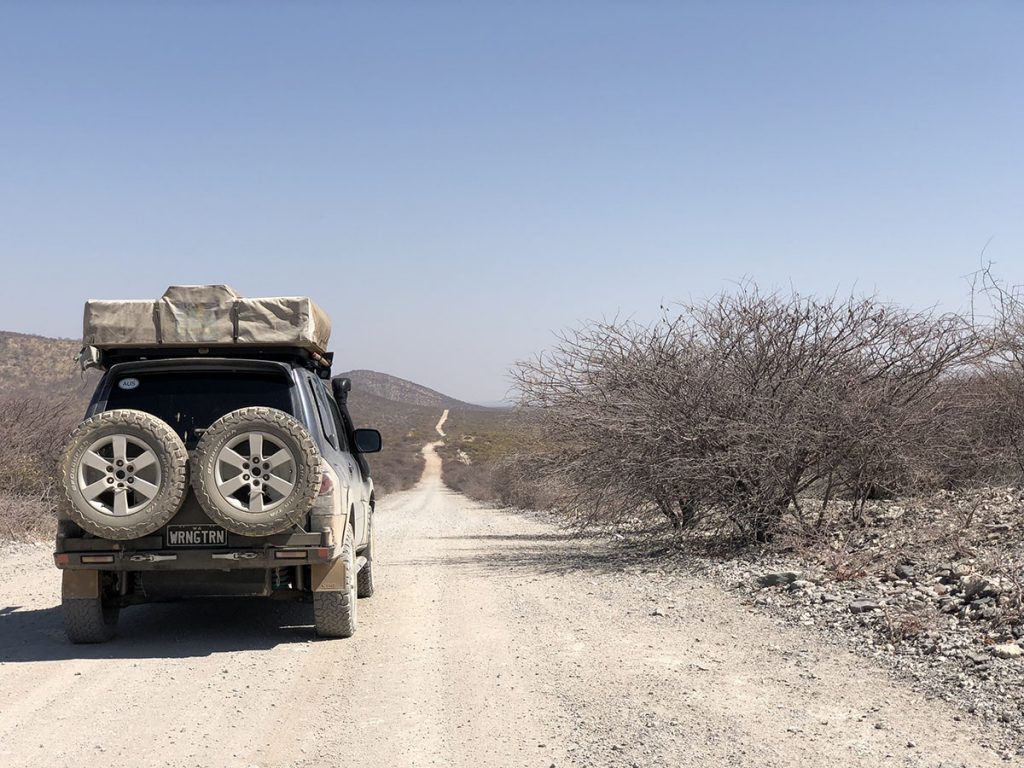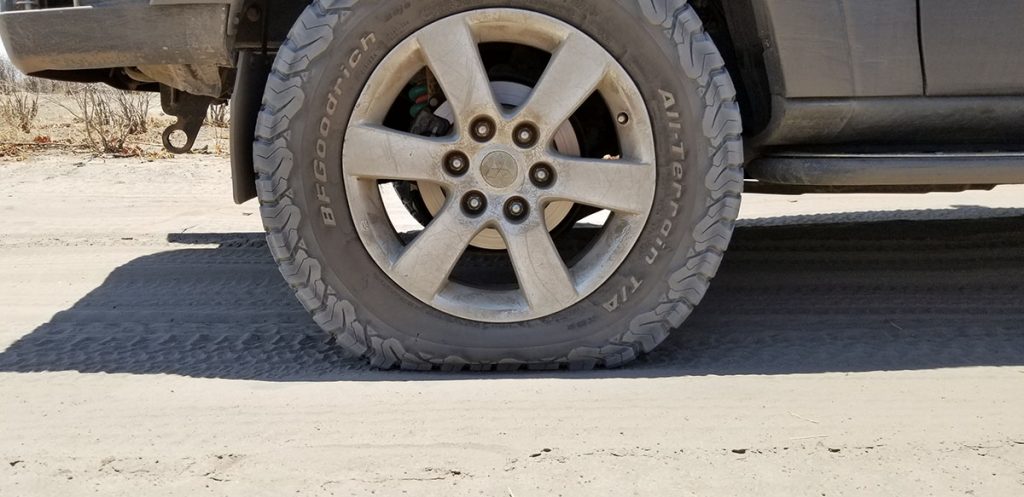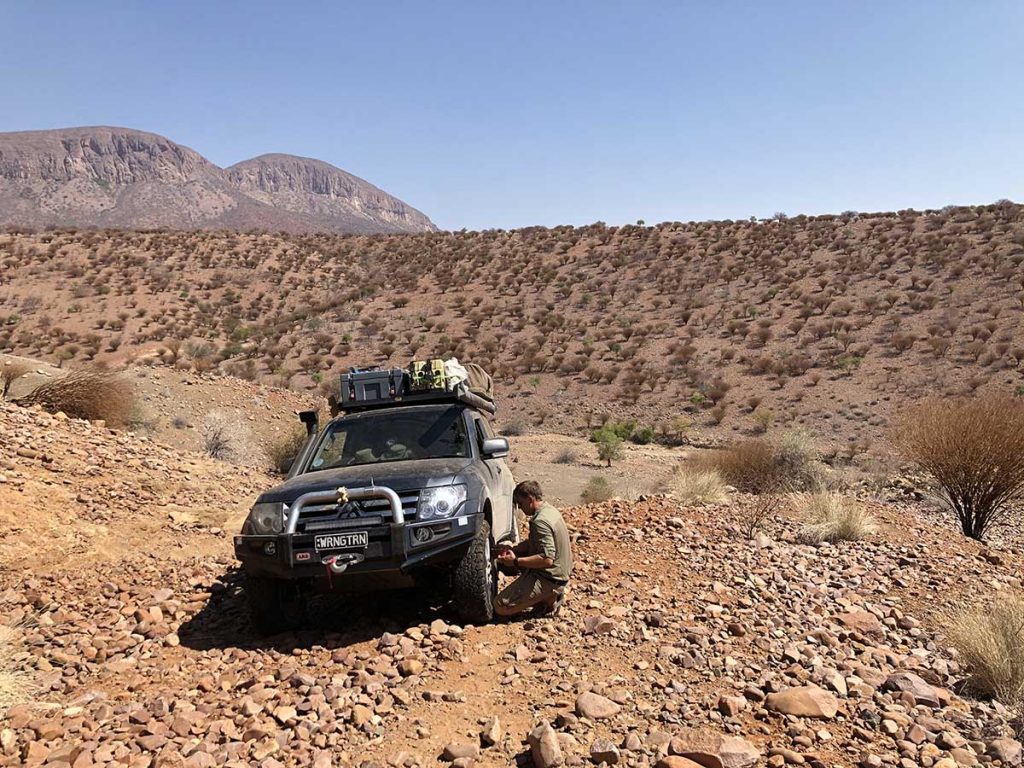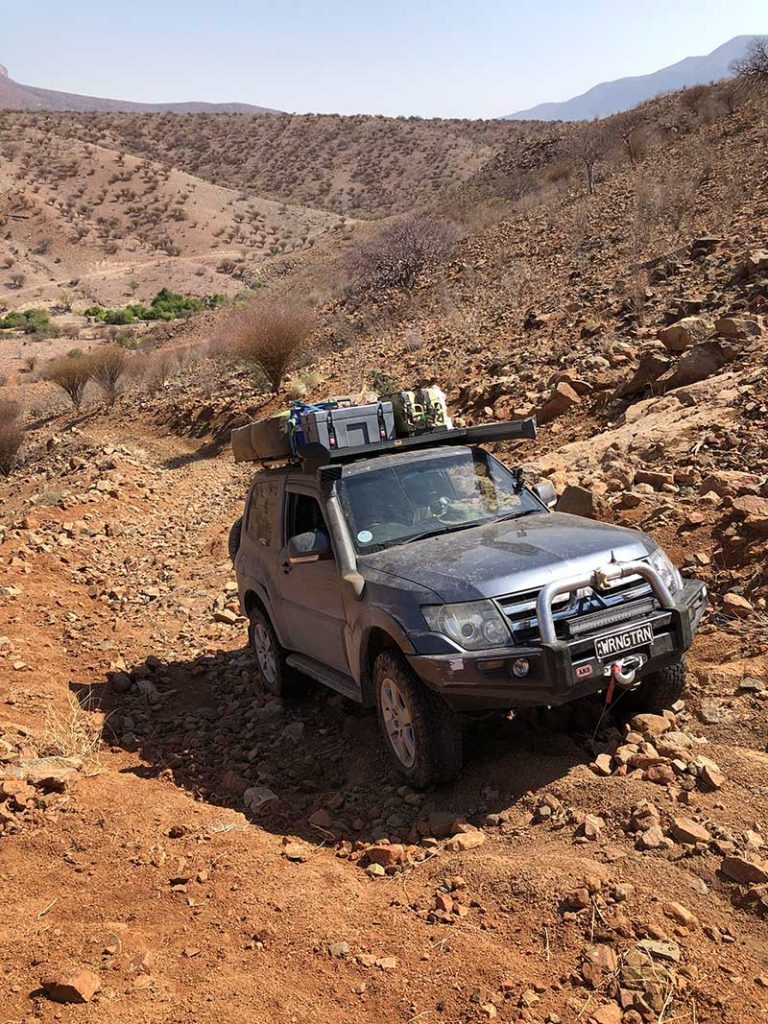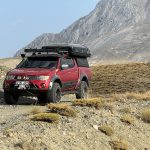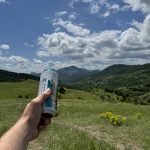You’ve seen the trax ads, you’ve seen the demonstrations, get bogged and use our pricey equipment to recover yourself. But what if there was another way? If you watch closely, in most videos the tyres till have highway pressure in them.
Editors note: All pressures are from my vehicles and your number will vary based on load and conditions
Now I am not discrediting this equipment, as in some situations tyre pressure can only help so much. Mud comes to mind pretty quickly. So where should we start, basic equipment sounds like a good place.
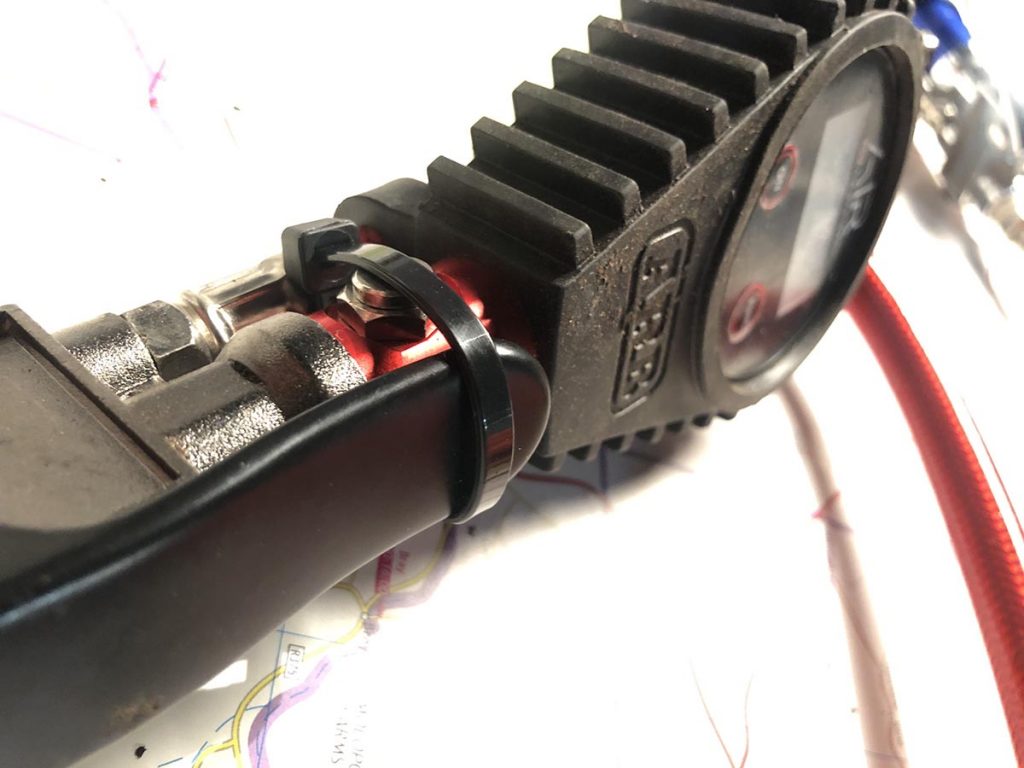 I use a zip tie to hold the handle depressed so I can walk away while refilling
I use a zip tie to hold the handle depressed so I can walk away while refilling
Equipment required:
Air compressor: Get yourself a decent one, cheap ones fail and will cost more in the long run. I run the ARB single pump unit, I have had it for 8 years with zero failures or issues.
Air gauge: You do need an accurate number, an analog one works as well as a fancy digital one, the choice is yours to make.
Deflator: this one ranges, I use the ARB deflator the removes the valve stem, but I also used to use a pen tip and time it.
These to me are basic items every 4wd should be equipped with.
Dirt road driving:
Some spend 1000’s on fancy suspension setups, adjusting rebound, spring rates and the lot, but what if you could achieve the same with a set of 300 dollar springs, good shocks and some lower pressures. As this is a blog based around overland work and not baja racing, you can get away with this type off setup. Going from 45psi highway pressures to 28psi on gravel give me the ability to have a soft ride, soft enough to have boiling hot tea in the center console with no spills on the corrugated roads of Namibia. Even at this level of pressure you will do no damage to the sidewall, and the suspension will take less of a beating as the rubber acts as a second spring absorbing bumps as it hits. Fuel consumption goes up about 10% due to a change from tarmac to gravel and the lower tyre pressures.
Sand driving:
Now where getting somewhere, with the current setup anytime we touch sand it is straight to 14psi/16psi to start. We float across the sand effortlessly. Should you be running that low? No idea, you should be able to drive, look behind and see tread pattern, if you can’t lower it some more. (exceptions in soft, hot sand obviously but you will feel the vehicle is not struggling but rather floating) Don’t be afraid to keep dropping if required, we have run 8psi/8psi for 100’s of kms non stop due to the conditions with zero ill effects. The clearance lost is a bit of a tricky issue to deal with, but rolling around in a IFS/IRS rig the diffs tuck away and we don’t struggle, possible problems if you have a solid axle and drag pumpkins around.
I’m stuck, Now what?
Drop some more, In the photo here I am stuck on a 45* slope of loose rock and gravel, dropping to 15psi all around allowed me to drive out, and drive out without smashing the throttle down. Breakages can be avoided, winching can be avoided at times. Give it a try. We have rescued people bogged for hours and hours that couldn’t get unstuck, but only have become bogged from pressures in the first place.
- Drop em
- 45* loose gravel slope, at 18psi impossible, at 12 no issues
Know your vehicle and learn what your tyres like, overall you should experience a better time offroad, with more time around the fire drinking instead of digging.
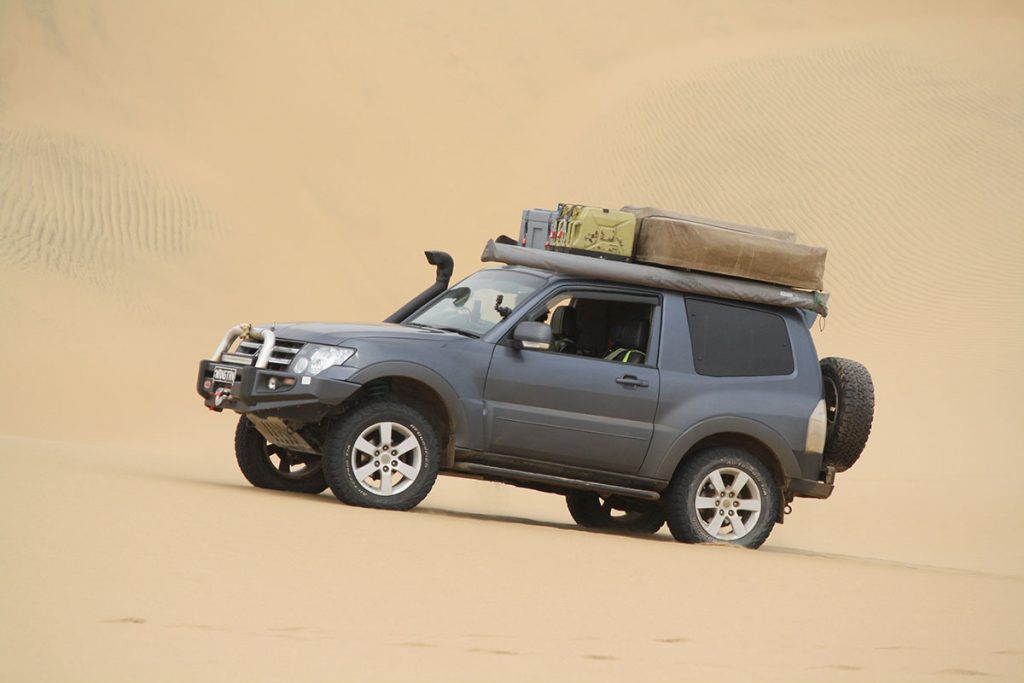 Asareh Floating across the sand without a problem
Asareh Floating across the sand without a problem

